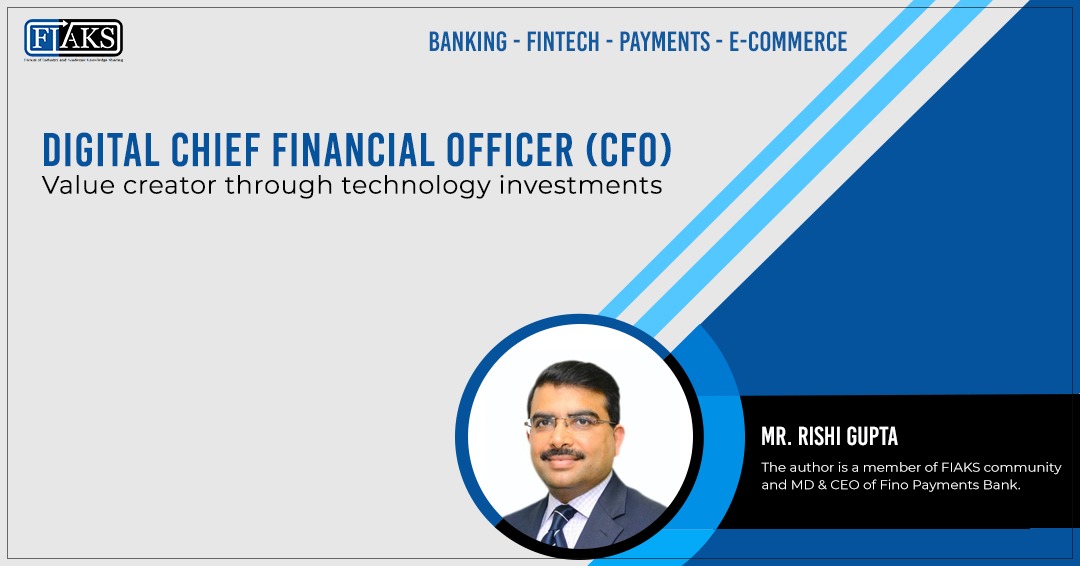Introduction
We are living in times of Alexa, Echo and Google Assistant among others, where a digital device or app, understands and executes simple voice commands – eliminating the need to push a button or remote. It is interesting how technology or digital has become all pervasive across activities that we engage in. This has changed the way we behave – be it as individuals or organizations.
Corporate entities as torch bearers of the nation’s economy have been deploying technology to improve efficiencies, cut costs, increase production as well as sales, enhance profits and gain customer loyalty.
We are living in a dynamic world where new technology solutions are being developed and deployed at a far greater pace than ever. Organizations that are slow in responding to these changes or are comfortable with the status quo are at a major risk of business disruption.
As a part of risk management, top management needs to ask questions about the organization’s preparedness for such a disruption, experiment to create new systems and even leverage talent that is outside of the organization.
Going digital is critical
To put the business disruption in perspective, a 2016 Harvard Business Review Analytic Services global survey reported that firms that embraced digital transformation averaged a 55% increase in gross margins over a three-year period. On the other hand, companies that were slow in adopting new age technology solutions generated an average of 37% growth during the same period.
In this context, it is worth recalling what John Chambers, former CEO and current Chairman Emeritus of CISCO Systems said, “At least 40% of all businesses will die in the next 10 years… if they don’t figure out how to change their entire company to accommodate new technologies.”
What is behind this shift?
It’s strategic. Going digital is no longer a simple IT challenge. Organizations are turning to digital technologies to gain competitive advantage and strengthen their ability to compete. The digital initiatives support new products, business models and customer experiences, in the process collaborating with other support functions.
It is therefore not surprising that firms are gradually increasing spend on digital initiatives. As per International Data Corporation (IDC) estimates, enterprises are expected to spend USD 1.7 trillion on digital transformation in 2019, which is a 42% increase compared with 2017!
This change is crucial that indicates a marked shift in the way organizations perceive the impact of digital interventions.
But change has never been easy. Companies face formidable barriers, be it achieving business goals or adopting digital strategy.
Amongst all the departments and functions, the one that can benefit the most from digital transformation as well as contribute immensely to business growth is finance and accounts (F&A). But, there lies the catch!
Paradigm shift
Surprisingly, at a time when emerging technologies such as artificial intelligence and predictive analysis are buzz words to drive customer centric innovation, finance function seems to be held back by legacy systems. Such systems are not integrated and as such don’t communicate with each other. That means the organization doesn’t have access to a single, real-time view of customer engagement.
According to Innovation in the Finance Function Survey 2018 a staggering 65% of respondents are not actively committed to innovation.
*The study was conducted by FSN Modern Finance Forum on LinkedIn that has over 50,000 senior finance professionals as members (survey respondents) across 23 countries and 13 industry sectors.
That brings to the fore a pertinent question. Why does F&A function shy away from digital innovation?
- Fear of making mistakes?
- Culture of indifference?
- Lack of platform to share ideas?
- Failure of leadership to drive innovation?
It could be a combination of more than one factor. However, what comes out clearly is the need to bring about a paradigm shift in the F&A function’s thought process, especially from digital transformation perspective.
Register & Read the entire article


